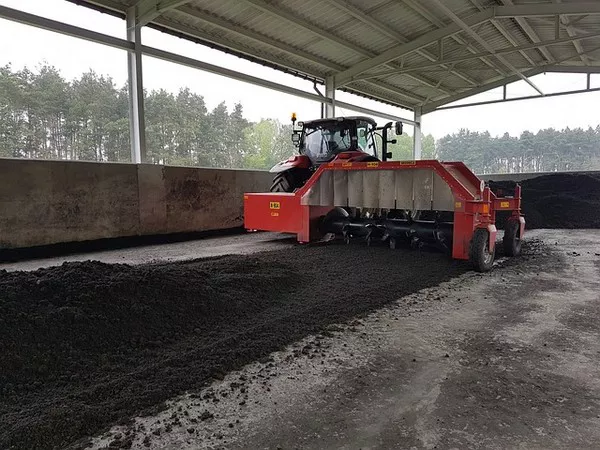Wastewater treatment is a critical process that plays a pivotal role in maintaining environmental sustainability and public health. It involves a series of intricate procedures aimed at removing pollutants, contaminants, and solids from wastewater before it is released back into natural water bodies or returned for reuse. One of the primary stages in wastewater treatment is screening, a fundamental process that focuses on the removal of large solids and debris. This article delves into the importance, mechanisms, and technologies behind screening in wastewater treatment.
The Significance of Screening
Screening is a preliminary treatment process that serves as the first line of defense in wastewater treatment plants. It involves the separation of large and coarse materials such as sticks, plastic, paper, rocks, and other debris that find their way into the wastewater stream. The primary goal of screening is to prevent these solid materials from interfering with subsequent treatment processes and equipment, such as pumps, pipes, and biological treatment units.
Effective screening has a cascading impact on the entire wastewater treatment process. By removing larger particles at the outset, the burden on downstream processes is reduced, leading to increased efficiency, decreased maintenance costs, and improved overall system performance. Furthermore, minimizing the presence of solids enhances the effectiveness of subsequent treatment steps like sedimentation, biological treatment, and disinfection.
Screening Mechanisms
The fundamental principle underlying the screening process is the use of physical barriers to intercept and remove solid materials from the wastewater flow. Screening mechanisms are designed to accommodate a wide range of particle sizes and shapes, ensuring that both small and large debris are captured.
1. Bar Screens:
Bar screens are the most common type of screening equipment used in wastewater treatment. They consist of vertical or inclined bars spaced at regular intervals. As wastewater flows through the screen, larger solids are trapped on the upstream side, while screened water passes through the gaps. Bar screens can be mechanically cleaned either manually or automatically. Automatic cleaning involves rakes or rotating brushes that remove accumulated debris from the screen surface.
2. Drum Screens:
Drum screens are cylindrical devices with fine mesh or perforated surfaces. Wastewater is directed into the drum, and as it rotates, larger particles are caught on the surface. A mechanical scraper or spray system removes the captured debris, allowing the clean water to pass through.
3. Fine Screens:
Fine screens employ finer mesh or perforations to capture smaller particles that might bypass bar or drum screens. These screens are particularly useful in urban areas where a diverse range of pollutants like plastics, grit, and smaller debris are present in wastewater.
Types of Screenings
The materials removed during the screening process are commonly referred to as “screenings.” Screenings encompass a variety of solid materials, and their composition can vary depending on the source of the wastewater. The types of screenings encountered in wastewater treatment include:
Trash: This category includes items like plastics, papers, textiles, and other non-biodegradable materials that can clog pipes and hinder equipment functionality.
Grit: Grit consists of small, abrasive particles such as sand, gravel, and coffee grounds. Grit removal prevents abrasion and damage to downstream equipment while also reducing the potential for blockages.
Organics: Organic materials like leaves, wood, and plant matter are often found in wastewater streams. Proper removal of organics prevents their accumulation in the treatment system, where they can potentially lead to odor issues and process inefficiencies.
Screening Technologies and Innovations
Advancements in technology have led to the development of innovative screening solutions that enhance the efficiency and reliability of the wastewater treatment process. These technologies address challenges associated with traditional screening methods and offer improved performance in solids separation.
Step Screens: Step screens consist of a series of steps that create a cascade effect. As wastewater flows over the steps, larger particles are separated and collected at each level. This design allows for efficient removal of solids while minimizing the potential for clogging.
Rotating Belt Screens: Rotating belt screens utilize a rotating perforated belt to capture solids from the wastewater flow. The captured debris is then conveyed to the discharge point, ensuring continuous removal and minimizing the risk of blockages.
Dual Flow Screens: Dual flow screens are designed to handle high-flow conditions and variable particle sizes. They incorporate two screening surfaces—one fine and one coarse—to effectively capture both large and small solids.
Screening Augmented by Air Flotation: This innovative approach combines screening with air flotation to remove both organic and inorganic particles from wastewater. The introduction of microbubbles helps lift solids to the surface, where they can be easily skimmed off.
Conclusion
Screening is an integral component of wastewater treatment, serving as the initial step in the removal of solids and debris from wastewater streams. By preventing large materials from entering downstream treatment processes, screening contributes to the overall efficiency, reliability, and environmental sustainability of wastewater treatment plants. The diverse range of screening mechanisms and technologies available today allows for tailored solutions that address the unique challenges posed by different types of wastewater. As advancements in technology continue, the screening process is poised to become even more effective and adaptable, ensuring the continued protection of our water resources and ecosystems.

